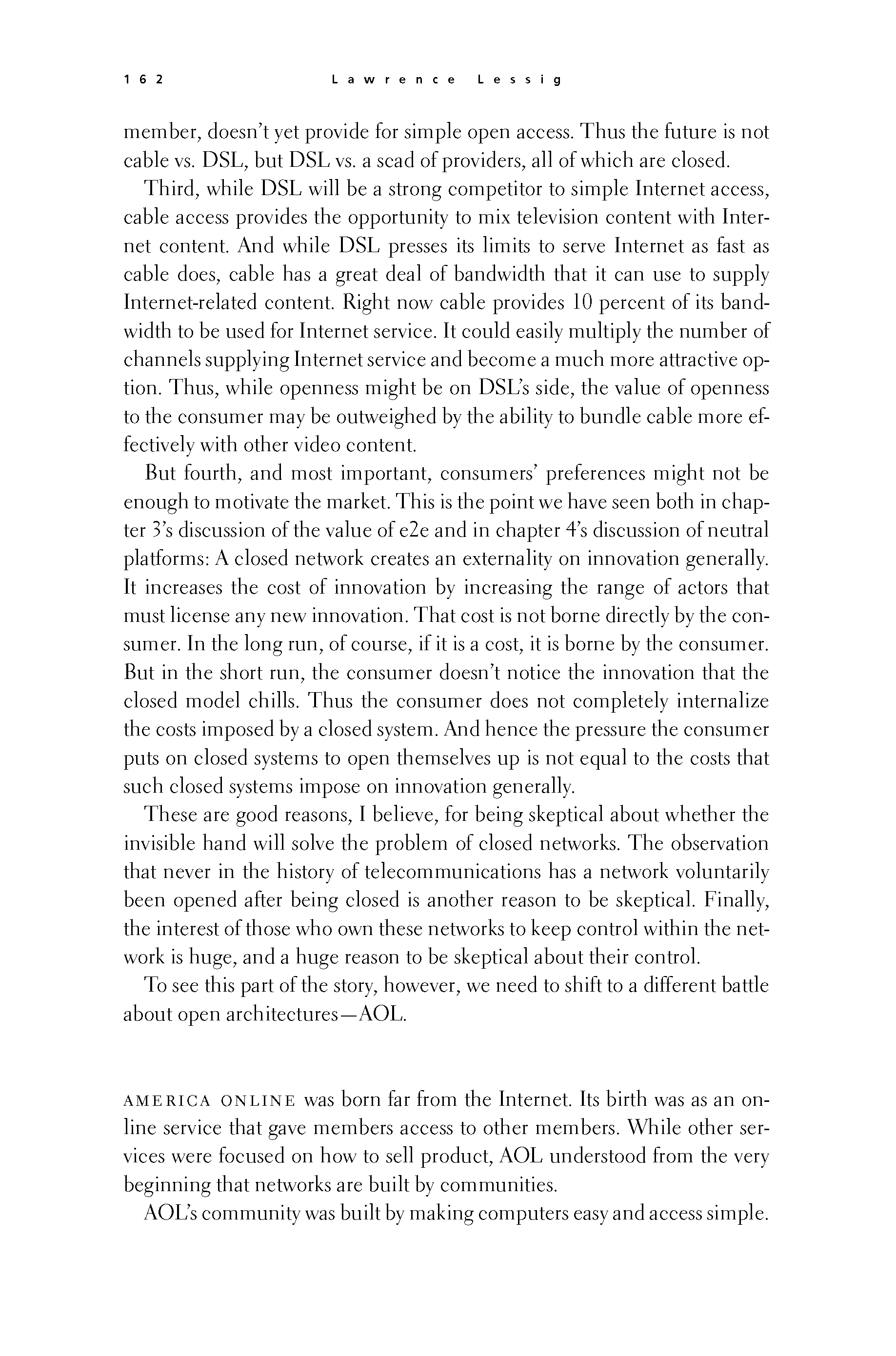 p161 _
-chap- _
toc-1 _
p162w _
toc-2 _
+chap+ _
p163
p161 _
-chap- _
toc-1 _
p162w _
toc-2 _
+chap+ _
p163
member, doesn't yet provide for simple open access. Thus the future is not
cable vs. DSL, but DSL vs. a scad of providers, all of which are closed.
Third, while DSL will be a strong competitor to simple Internet access,
cable access provides the opportunity to mix television content with Inter-
net content. And while DSL presses its limits to serve Internet as fast as
cable does, cable has a great deal of bandwidth that it can use to supply
Internet-related content. Right now cable provides 10 percent of its band-
width to be used for Internet service. It could easily multiply the number of
channels supplying Internet service and become a much more attractive op-
tion. Thus, while openness might be on DSL's side, the value of openness
to the consumer may be outweighed by the ability to bundle cable more ef-
fectively with other video content.
But fourth, and most important, consumers' preferences might not be
enough to motivate the market. This is the point we have seen both in chap-
ter 3's discussion of the value of e2e and in Chapter 4's discussion of neutral
platforms: A closed network creates an externality on innovation generally.
It increases the cost of innovation by increasing the range of actors that
must license any new innovation. That cost is not borne directly by the con-
sumer. In the long run, of course, if it is a cost, it is borne by the consumer.
But in the short run, the consumer doesn't notice the innovation that the
closed model chills. Thus the consumer does not completely internalize
the costs imposed by a closed system. And hence the pressure the consumer
puts on closed systems to open themselves up is not equal to the costs that
such closed systems impose on innovation generally.
These are good reasons, I believe, for being skeptical about whether the
invisible hand will solve the problem of closed networks. The observation
that never in the history of telecommunications has a network voluntarily
been opened after being closed is another reason to be skeptical. Finally,
the interest of those who own these networks to keep control within the net-
work is huge, and a huge reason to be skeptical about their control.
To see this part of the story, however, we need to shift to a different battle
about open architectures -- AOL.
America online was born far from the Internet. Its birth was as an on-
line service that gave members access to other members. While other ser-
vices were focused on how to sell product, AOL understood from the very
beginning that networks are built by communities.
AOL's community was built by making computers easy and access simple.
[[162]]
p161 _
-chap- _
toc-1 _
p162w _
toc-2 _
+chap+ _
p163